|
since 1974Paintings: 'transformation', first reliefs: 'sequenzen' (sequences)
since 1976 Reliefs and standing objects: 'farbschatten' (color shadow)
Paul Weder, art critic, Zurich: "Concrete art in a particular individual refraction shows...the eye sees it only in raking or oblique light. Because these painted stripes cast colored shadows on the white of the surroundings, it results in effects of magical delicacy - the subtle and immaterial grids that structure the terrain of the reliefs." from NZZ, 03.05.77
Hans Neuburg, art critic, Zurich: "...This new relief technique with its colored shadows unmistakably belongs to the Japanese spirit and the Zen culture. An astoundingly diverse component presents itself here in the field of concrete art...." from the journal Zürich Leu, 04.11.80
Max Bill, sculptor, painter, Zurich: "for shizuko yoshikawa...At first following the tracks of its experienced exponents, later adding new elements of her own. Today shizuko has achieved an independent mastery of her medium, and her work represents a genuine, individual contribution to the development of Concrete Art. shizuko yoshikawa has absorbed the principles of the Concrete Art of Zurich and endowed it with a graceful, subtle element of her own. An emancipated Japanese woman, she has succeeded in uniting the constructive ideas of our time with Japanese tradition with a high degree of perfection." from the solo exhibition catalog of Minami Gallery, Tokyo, 1977
Masataka Ogawa, art critic, Tokyo: "...yoshikawa's works have been produced through the utmost intellectual methodology. Mathematical partitions, colorful treatment - we can find in the series of works called 'color shadow' created through these two processes an elegance that is highly Japanese. Or to put it in other words, yoshikawa's works express a quiet, delicate, almost transitory feeling. Perhaps we can say that in yoshikawa shizuko's art the world of a traditional Japanese sensibility has blossomed forth on a foundation of European logic." from Japan Quarterly, Asahi Newspaper, Vol. XXV No. 3, Tokyo 1978
since 1977 Tempera drawings: 'konstellation mit doppellinien' (constellation with doubled lines)
since 1978 Paintings: 'netstruktur' (net structure)
Ludmila Vachtova, PhD, art historian, Zurich: "...These pictures of fine bands have the appearance of actual traces of color shadows, and they are dematerialized into something akin to an aura. Their rhythmic constellations, combinatively determined and mathematically controlled by encounters between four color values, nevertheless unfold visually like a free partitura of light. The inner dynamics take their course with the regularity of an untroubled pulse, and the almost provocatively delicate color structures, as transparent as it is possible to conceive, seem almost to be breathing, hinting at a living atmosphere. As natural as day and night and the order of the seasons, the themes change in chronologically synchronized sequences and return in a natural cycle to their origin: the square. In the end, it is the aesthetic statement that gains the upper hand over the rational order upon which it is based. Intuition is conscious of its own hidden rules, the square opens; and shizuko yoshikawa discovers a coordinated, Euro- Japanese, visual equivalent of sensuality." from the catalog of the solo exhibition at Kunsthalle Winterthur, 1984
since 1989 Paintings: 'hommage aux upanischad' (homage to upanischad)
Sophia Wahlen, art critic, Zurich: "Poetry of a successful synthesis...fine art of the fugue. The original investigation of the problem of light and shadow has become an investigation into the secrets of color effects and the insidious appeal of white pictorial surfaces. The artist's great sensitivity, combined with surehanded craft - whether gouache, tempera or acrylic - renders her paintings attractive to the viewer. Demonstrating the fine art of the fugue, her works also possess the beauty and imagination of higher mathematics and astronomy. The suggestive variations within the laws of a given order, the stringent choreography of form with the resulting rhythmic disquietude - this typical 'disquieting quiet' of yoshikawa's - seems to hold the secret of her work. shizuko yoshikawa's cosmos, a strangely compelling synthesis of Far East and the West, grows up out of its rational-analytical foundation to culminate unexpectedly in self-assured, meditative poetry. Wise, humble and proud, it reaches toward infinity...." from Tagblatt der Stadt Zurich, 28.09.1988
since 1990Paintings: 'zwei energien' (two energies) and 'energien aus der leere' (energies from the void)
shizuko yoshikawa, Zurich "...In my works, everything has always been built upon interpenetrating and structurally interdependent parts, like the visible and the invisible. The visible manifestations are concentrated energies contained in the void. The void is a force field and a source of the visible. They are symbolic images of the vital interdependency that I view as cosmic correlations. With 'two energies' I am deliberately referring to the interplay of the two energies of the two worlds. I mean Europe, which I have admired and sought out since my youth - I could also call it the beauty of logos - and Japan, to which I feel profoundly connected in regard to feelings and inner needs: the contradictory and the complex as a path and goal toward meditation." from the exhibition catalog 'Karo Dame' at Aargauer Kunstmuseum, Aarau, 1995
Tomonobu Imamichi, PhD, philosopher and aesthetician, Professor Emeritus, Tokyo University: "...yoshikawa's work probes deeper into the Oriental sensibility or human growth, and this can be ascribed to her structural use of the Japanese traditional aesthetic concept ma. As we get closer to the 1980s, the formal repetition in her work breaks through the symmetrical geometry of distance to give rise to an indescribably exquisite sense of rhythmic timing. This attribute has become yet more pronounced in her more recent work. This is a visual formulation of the Buddhist concept of 'nothingness' or 'the void' (mu) which is ungraspable in terms of mathematical logic. A good example is the distance between the cruciform figures in the 1989 work m292 'hommage aux upanisad'. The pale-colored space at the center as a manifestation of 'nothingness' conceived as the Void of Voids and giving rise to a multitude of 'rhythmic intervals' (ma)...." from the solo exhibition catalogue 'kosmische gewebe' at Contemporary Sculpture Center, Tokyo, 1996
since 1993 Tondo paintings: 'kosmische gewebe-strahlend' (cosmic web-radiating), 'kosmische gewebe-fliessend' (cosmic web-floating)
Christian Klemm, PhD, art historian, Kunsthaus Zurich: "...From the intently followed field of Zurich geometric-constructive art, a tondo by shizuko yoshikawa from her new series has been chosen for the collection. In this work, she reaches a new artistic level, marking another spatial breath and articulating a lyrical rhythm." from the annual report of Kunsthaus Zurich, 1993
"...The spatial-dynamic activation of the pictorial field provided the art movement with new impulses, as seen in the floating cross structures by shizuko yoshikawa." from the publication 'Kunsthaus Zurich Collection Masterpieces'. Hatje Cantz Verlag, Ostfildern, 2007
Goetz Pochat, PhD, art historian, professor emeritus, Graz University: "...This tendency towards disengagement from the strict grid form and an increasingly dynamic composition can be ascertained in the large monumental tondi of recent years. The colored crosses begin to move, pushing from the energy-laden center toward the outside, intersected by the edge of the circle, striving toward spatialization, subjected to a universal movement gripping the entire cosmos, infinitely expanding under constant acceleration. Although still bound to the strict laws of complementary contrast, rotational symmetry and reflection, from light in the centre progressing out towards dark, and vice versa, in contrasting fashion from dark in the center out towards light, transparent and saturated in a state of vital tension and interconnection to one another, the colored crosses now take on a greater dynamic and life of their own. Following a spiral-shaped momentum from the magnification of the cross forms toward the periphery, overlapping, flowing and pushing outward and onward with ever greater force and speed, viewers are gripped by this movement as they trace the elementary action, feeling surrounded by the same cosmic forces and integrated in this process of perpetual motion and change. yoshikawa has successfully combined the stringent language and syntax of elementary forms and their composition with the freedom of dynamic movement and its self-referential development - principles joining organic life in the world together with its antecedent in the cosmos. From the tradition of concrete art we are led back to the roots of existential self-discovery. This internalization and contemplation, long characterizing the way of Zen and the traditions and practices of Japan, seems to result in a convergence with the rational western concept of the world in which the universe aspires yet again to a state of entropic equilibrium and harmony in an escalating process controlled by dynamic expansion, energy concentrations and discharges. It is as if the circle form or tondo is now taken up by the elements, while also being breached by the dynamic spiral pull of the movement, their boundaries dissolved. We too are gripped by it as viewers...." from the solo exhibition catalog 'kosmische gewebe' (cosmic web) at Contemporary Sculpture Center, Tokyo, 1996
Caroline Heidi Ebertshäuser, PhD, art historian, Munich: "...Yet over the years she found a language in which her own Japanese tradition of expression and European design were condensed into a distinctive new unity, into the 'cosmic web' as the artist now refers to her works. The Asian stillness of the messages and the suspension of rigorous 'concrete' contrasts through Japanese sensitivity to the subtly differentiated nuances of shadow within the light-dark transformed the stringent networks into a vital web of infinity. As a symbol of the interconnectedness of all things, network structures in a 'constructive order' are permeated in yoshikawa's paintings by a transparency made visible via the Asian conception of the void, as the very basis of all being. A dialog of East and West is shaped here that points the way toward the future." from the event program of the symposium 'Indras Netz' (Indra's Network) at The Japan Foundation, Cologne
since 1997 Tondo paintings: 'kosmische gewebe-atmendes feld (cosmic webbreathing)'
1997-2000 Red series of drawing: 'a roma', 1997, 1998 and 1999, and blue series of drawing: 'a roma - nach(t)spiel' ('a roma' - epilog), 2000
Guido Magnaguagno, art historian, the former curator of Kunsthaus Zurich: "...In her latest series, produced in gouache and/or pastel over the course of three stays in Rome consisting of 25 sheets, color has now entered the white-pastel line work and weave of color. Rome, and in particular the winter sunset observed from the Istituto Svizzero, not only brought red, orange and violet into her palette, but also evoked an unexpected emotionality and the courage to embrace (concrete) imperfection. A recurring basic geometric form that, like so many windows, opens up glimpses of the transcendental as a free variation on the invisible and absent-present." from the solo exhibition catalog: 'a roma', at Kunstmuseum Zurich, 2000
Hans Christoph von Tavel, PhD, art historian, former director of the Museum of Fine Arts Bern and Swiss Institute Rome, Yens/Bern: "...The circular arc, the crosses and the surrounding space are now immersed in a distinctive atmosphere that pictorially resolves the paradoxes and delivers the theme of a roma from its contradictions. The formerly analytical perspective on the cosmic web and its paradoxes is transfigured in atmospheric "synthetic" light. This impression is confirmed by the horizontal structure of the paper, which acts like a continuous stratification.... As a whole, this sequence is like a dreambased reflection of the entire intellectual and painterly experience of a roma." from the solo exhibition catalog: 'a roma', at Kunstmuseum Zurich, 2000
since 1997 Paintings: 'wandern' (wanderings)
since 2004 - 2011'... Paintings: 'my silk road' Stefan Paradowski, PhD, art historian, Chur "...With respect to more recent works, shizuko yoshikawa speaks of 'star-like constellations'. Indeed the symbols travel in orbit-like paths across the pictorial surface and recall constellations in the night sky above the Silk Road - 'my silk road'. The basic compositional element is cross-shaped, though not a Christian symbol, as the intersection of the horizontal and vertical bars is left blank. In general, the theme of the void is accorded ever-greater significance, becoming a constitutive component of the design. shizuko yoshikawa sees the 'pulse of life' symbolized in the 'stars': they stand for flowing, moving, breathing, coming and going, they stand in the figurative and Far Eastern-Buddhist sense for calm, serenity and spirituality...." from the exhibition catalog: 'Shizuko Yoshikawa, Matias Spescha', Museum Bickel, Walenstadt, 2006/p>
since 2008 'pulse'
|
|

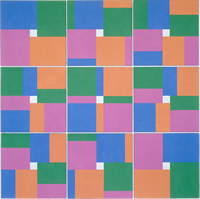
| t1
|
'transformation der vier gleichgrossen farbflächen', 1974
|
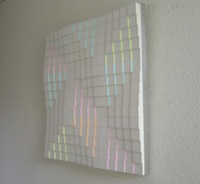 
| no.52
|
relief farbschatten ,75x75cm, 1978
|
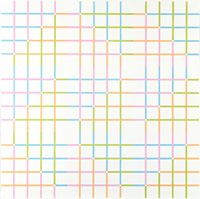 
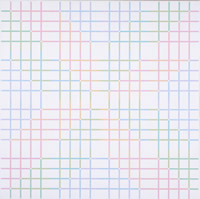 
| m215
|
'fs/4x4 'von 4 farben zur polyphonie', 1986 |
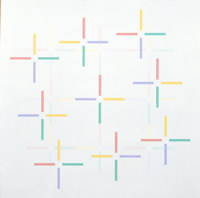 
| m295
|
'hommage aux upanischad', 1989
|
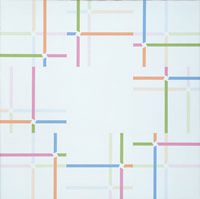 
| m322
|
'zwei energien' - 16, 1990
|
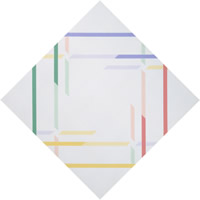 
| m375
|
'zwei energien', 1990-91
|
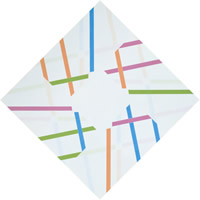 
| m429
|
'energien aus der leere', 1993
|
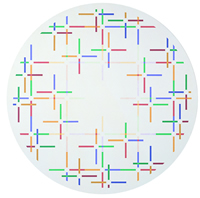 
| m433
|
'kosmische gewebe' - strahlend, 1997, sammlung: kunsthaus zürich
|
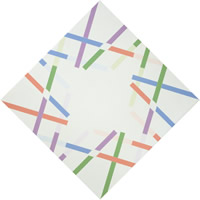 
| m457
|
'energien aus der leere', 1993-94, sammlung: peverellis, zürich
|
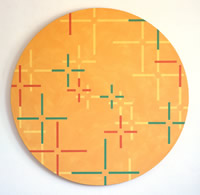 
| m489
|
'kosmische gewebe' - atmendes feld, 1997
|
 
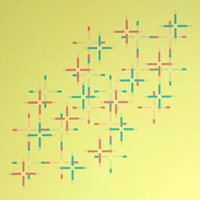 
| m688
|
'my silk road', 2005
|
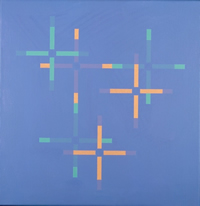 
| m657
|
'my silk road', 2004
|
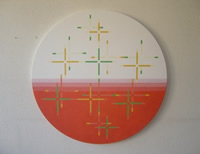 
| m722
|
'kosmische gewebe - überlagernd'
-2, 2006-07
|
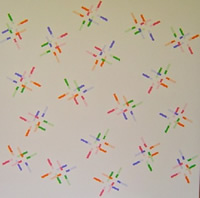 
| m739
|
'intermezzo für m223
(1986-87)' - II, 2008 |
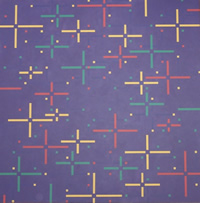 
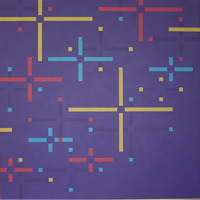 
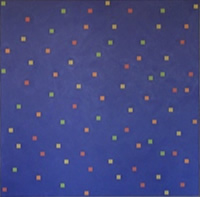 
| m780 |
'lebenspuls' 16, 2011-12 |
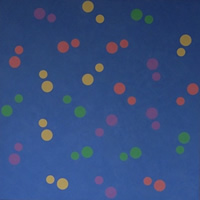 
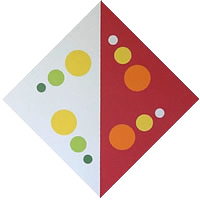 
| m795 |
'puls aus zwei felder', 2013 |
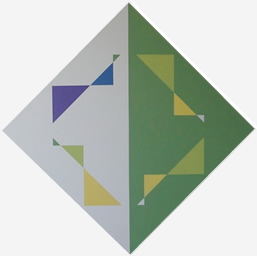 
| m794 |
'puls aus zwei felder', 2013 |
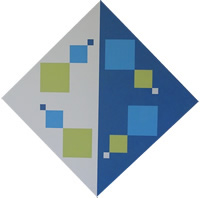 
| m793 |
'puls aus zwei felder', 2013 |
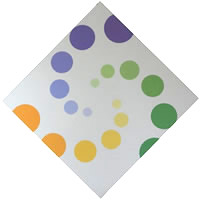 
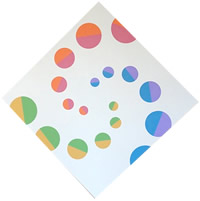 
|
|
























